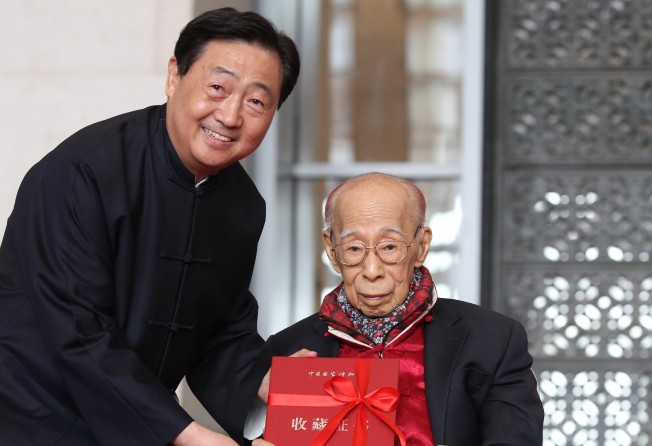Major exhibition for renowned Hong Kong-based sinologist Jao Tsung-I

The national museum has launched a major exhibition showcasing works by a top Hong Kong-based sinologist, marking his contribution to Chinese culture.
The exhibition was launched a day after Premier Li Keqiang received 98-year-old Professor Jao Tsung-i, and hailed him as the "pride of Hong Kong".
Speaking at a press conference yesterday, Chen Lusheng, deputy director of the National Museum of China in Beijing, described the display as a "centennial exhibition" and the largest dedicated to Jao.
"Master [Jao] is a most important scholar of the 20th and the 21st centuries. The exhibition will help the Chinese people understand how our cultural heritage has been passed on," Chen said.
Peter Cheng Wai-ming, a student who has followed Jao for 35 years and is now working in the University of Hong Kong's museum dedicated to Jao, said his teacher had broken new ground in Chinese culture, such as creating "northwest sect" landscape paintings. The style depicts the dry desert scenery in that part of the country using ink that is less watery, distinct from the southern and northern sects.
Jao attended the launch ceremony but did not speak. He will join a symposium today before returning to Hong Kong.
The exhibition, which runs until June 12, showcases Jao's output including 138 ink paintings, manuscripts, books, and some 30 works of calligraphy on bones, tortoise shells and bamboo. Some highlights are Dunhuang white paintings, landscapes and lotus paintings.
There are associated exhibits including items such as antique teapots, seven-stringed guqin and furniture. The exhibits have been borrowed from private collectors in Hong Kong and HKU Jao Tsung-i Petite Ecole.
Jao, born in Chiuchow - now Chaozhou - in 1917, is known for his excellence in the humanities, from Indian sanskrit to the art of the Dunhuang grottoes. He arrived in Hong Kong in 1949 and has taught everything from archaeology to ancient philology in India, the US and France, as well as in the city.
He is regarded as one of the two greatest sinologists in China, together with Ji Xianlin in the north, who died in 2009.
Professor Lee Chack-fan, director of the HKU Ecole, said a smaller display will be held in Hong Kong's central library in December.